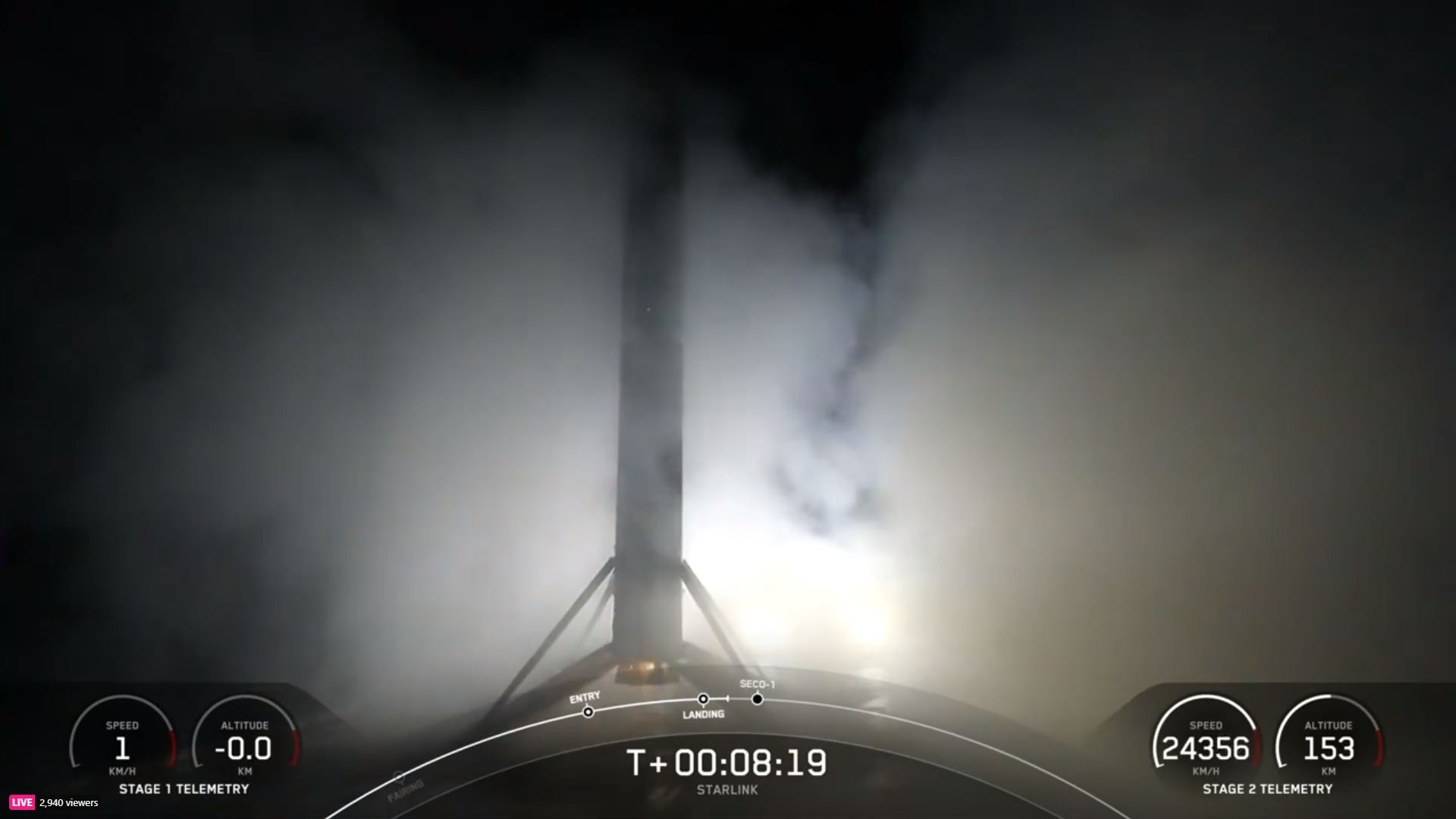
2024 might only be nine weeks old, but for SpaceX the records are already starting to fall like ninepins. Last year ended with a triumphant 96 missions by “single-stick” Falcon 9 and triple-barreled Falcon Heavy boosters—an average of a launch each 3.8 days—but as we enter March the fleet has already logged 22 flights, equal to flying every 2.9 days and putting the Hawthorne, Calif.-headquartered organization squarely on track for its targeted goal of up to 144 missions by the time the New Year’s Eve bell tolls.
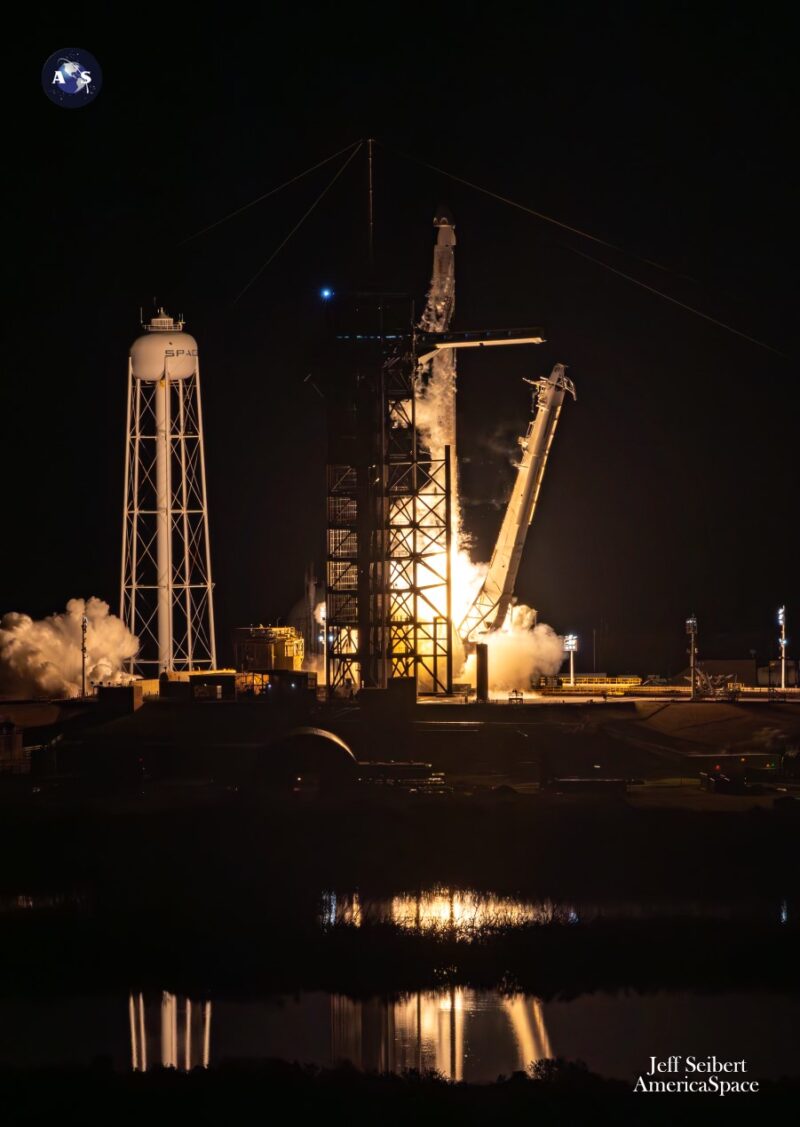
For the first time, in January, SpaceX completed a tenth launch in a single calendar month and less than three weeks ago flew three Falcon 9s within 24 hours of one another for the first time, as the U.S. Space Force’s highly classified USSF-124 roared uphill from Space Launch Complex (SLC)-40 at Florida’s Cape Canaveral Space Force Station, followed by Intuitive Machines’ IM-1 lunar mission from historic Pad 39A at Florida’s Kennedy Space Center (KSC) and finally a batch of Starlink low-orbiting internet communications satellites from Space Launch Complex (SLC)-4E at Vandenberg Space Force Base, Calif. And in March’s first week, SpaceX has broken its own record for the shortest interval between pairs of launches: flying two missions under two hours apart.
Following several days of weather-induced delay, a Falcon 9 successfully lofted Dragon Endeavour from KSC and her Crew-8 quartet of NASA astronauts Matt Dominick, Mike Barratt and Jeanette Epps, plus Russian cosmonaut Aleksandr Grebenkin, at 10:53 p.m. EST Sunday, bound for a six-month stay aboard the International Space Station (ISS). Fifteen hours later at 2:05 p.m. PST, another booster roared uphill from Vandenberg with 53 customer payloads as part of the Transporter-10 “rideshare” mission.
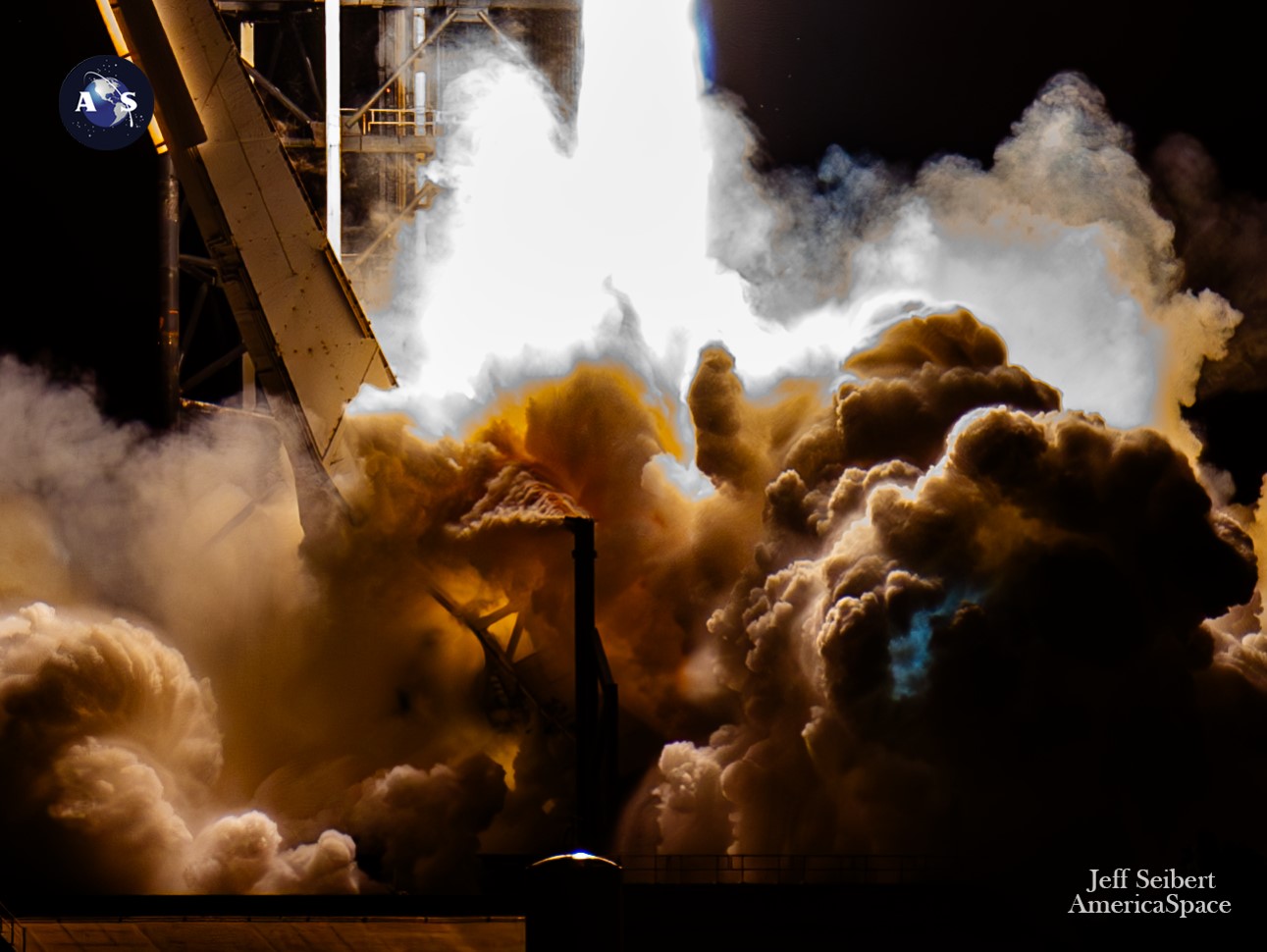
And even as that latter flight was in the midst of its two-and-a-half-hour payload deployment regime, the veteran B1073 booster was being readied at the Cape’s SLC-40 for her second outing of 2024 and the 13th launch of her career so far. First flown in May 2022, she has now launched 320 Starlinks into orbit on nine missions, plus the SES-22 and Amazonas Nexus geostationary communications satellites to Geostationary Transfer Orbit (GTO) in June 2022 and February of last year, as well as a lunar-bound mission in December 2022 with Japan’s Hakuto-R Moon lander, the United Arab Emirates (UAE) Rashid rover and NASA’s water-ice-seeking Lunar Flashlight.
And just last March, on her seventh mission, she became the most flight-seasoned Falcon 9 ever to lift a payload—whether human or cargo—to the International Space Station (ISS) with the CRS-27 Cargo Dragon. With tonight’s flight, she becomes the tenth booster since June 2022 to reach a 13th launch.
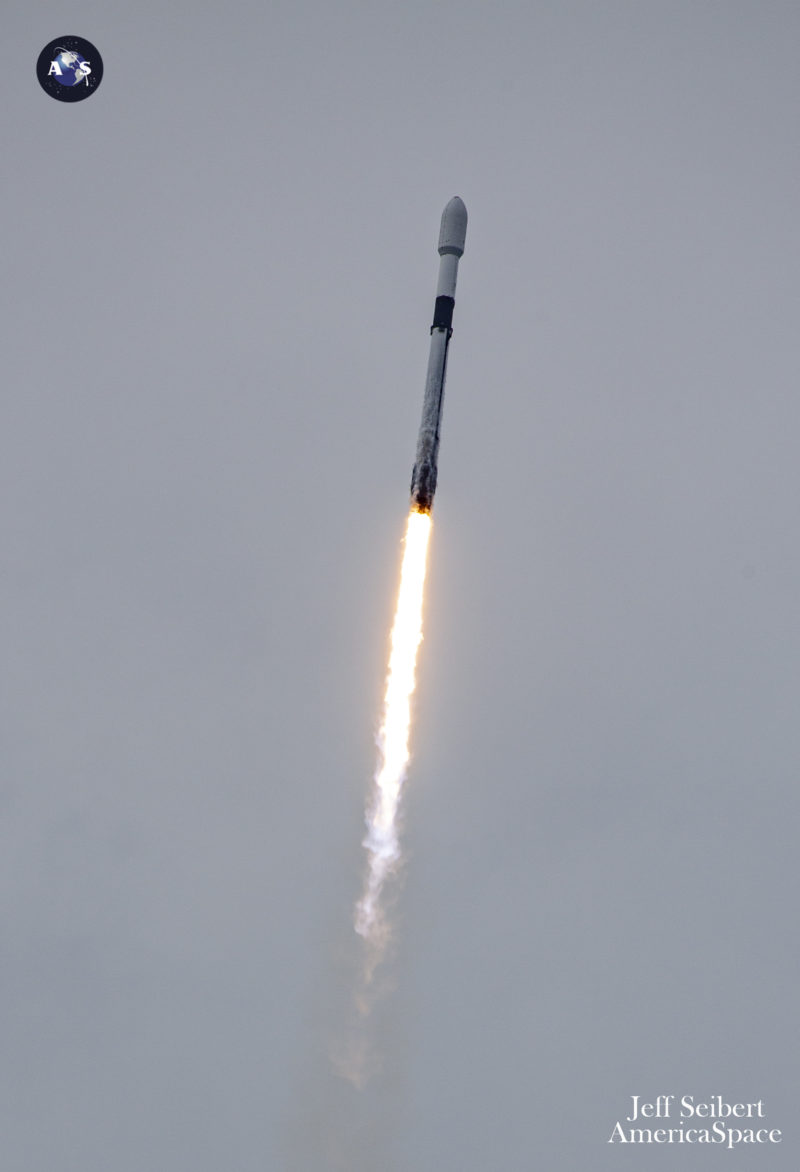
In readiness for her latest launch, the Autonomous Spaceport Drone Ship (ASDS), “A Shortfall of Gravitas”, put to sea out of Port Canaveral on 29 February, bound for a recovery position some 390 miles (630 kilometers) offshore in the Atlantic Ocean. Weather conditions for the near-four-hour “window” of T-0 opportunities, extending from 6:56 p.m. EST through 10:54 p.m. EST, were projected to be around 80-percent-favorable, deteriorating markedly to around 55-percent-favorable in the event of a 24-hour delay to Wednesday.
“A weak frontal boundary will remain within the vicinity of Central Florida through Monday, keeping warm temperatures and moist conditions in place,” noted the 45th Weather Squadron at Patrick Space Force Base. “Isolated showers and thunderstorms will be possible generally during daylight hours, with activity waning overnight.
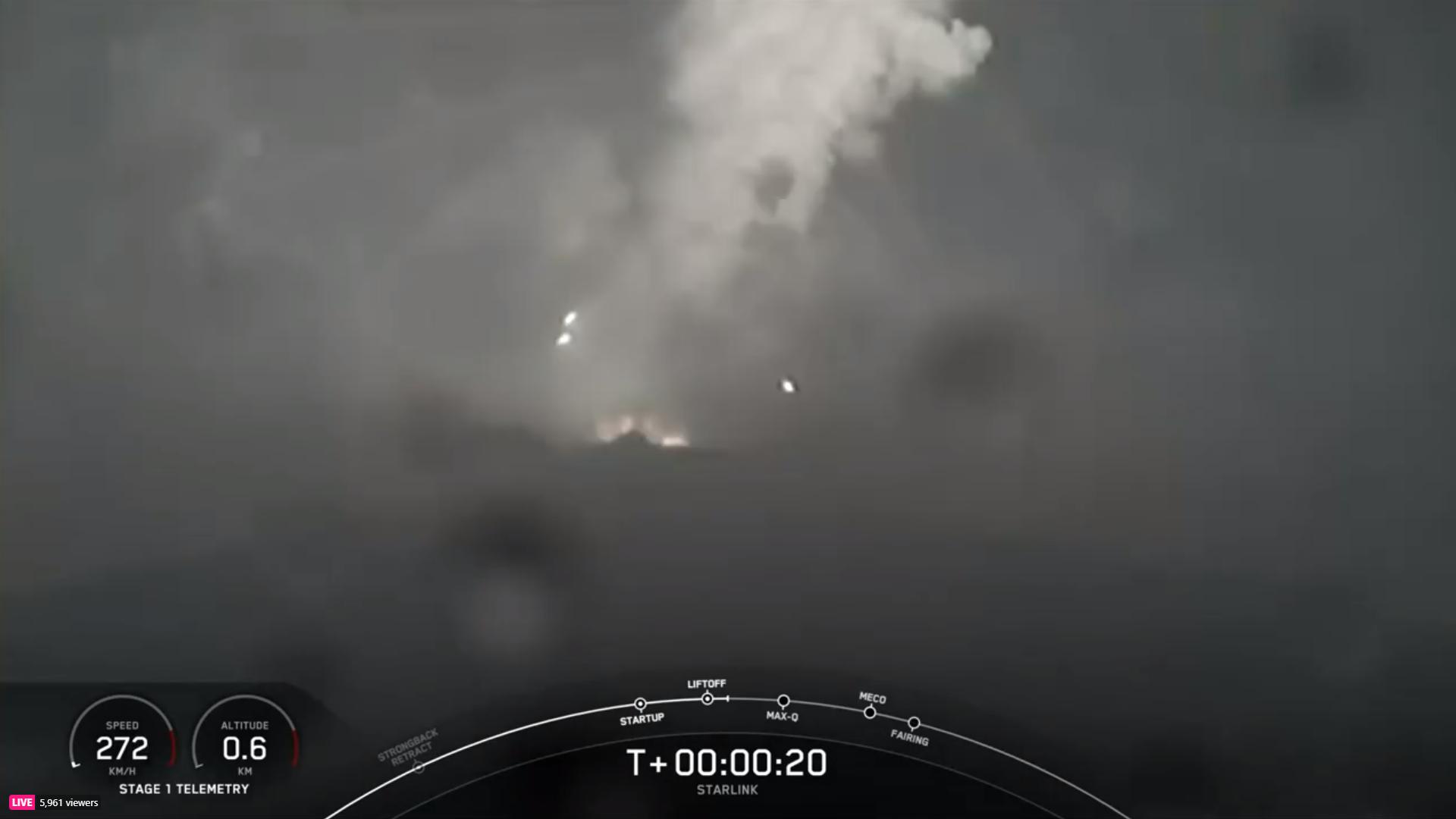
“During the initial launch window Monday evening, any convective activity remaining is expected to be displaced across the interior and western portions of the peninsula, but a few showers and lingering anvils may persist locally,” the 45th added in its Monday afternoon summary. “The main concerns for the primary launch window will be for the Cumulus Cloud Rule and the Anvil Cloud Rules.”
Shrouded in murky cloud, B1073 sprang from SLC-40 precisely on time at 6:56 p.m. EST, instantly setting a new record of one hour and 51 minutes between pairs of Falcon missions, neatly eclipsing the previous two hours and 54 minutes logged between a Falcon Heavy launch of the U.S. Space Force’s highly classified USSF-52 and a Starlink-laden Falcon 9 last 29 December. Launch-to-launch turnaround times have gradually fallen over the years from two missions flown within 24 hours for the first time in December 2021, before steadily narrowing to missions only seven hours apart in October 2022, four hours apart in March 2023 and most recently less than three hours apart last December.
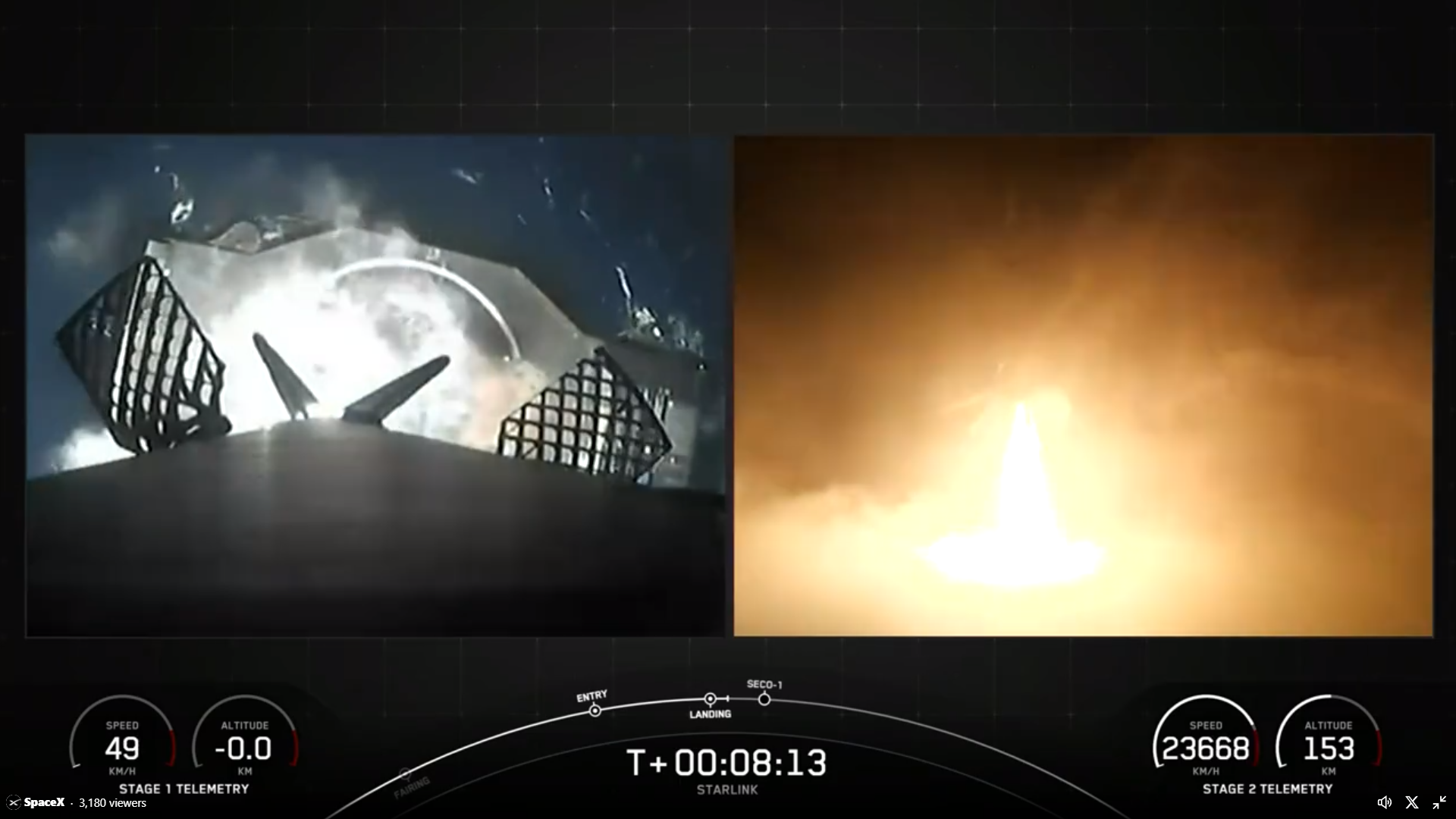
Barely visible in the gloom, B1073 performed with characteristic perfection, her nine Merlin 1D+ engines shutting down after 2.5 minutes and the Merlin 1D+ Vacuum engine of the second stage roaring alive and glowing red-hot to commence its six-minute “burn” to heave 23 Starlinks, totaling around 37,700 pounds (17,100 kilograms), into low-Earth orbit. As the core stage touched down in the darkness on ASOG’s expansive deck, the second stage continued its climb, eventually shutting down at 8.5 minutes into the flight.
Deployment of the 23 Starlinks was anticipated about 64 minutes after launch, as this AmericaSpace story was being prepared. As a network, Starlink enables high-speed and low-latency internet provision to over 70 sovereign nations and international markets in North and South America, Europe, Asia, Oceania and Africa. Landlocked Eswatini—formerly Swaziland—in southern Africa and Honduras and Paraguay joined Starlink in December.

The downsized Starlink “V2 Mini” satellites, first flown last February, boast three to four times greater “usable” bandwidth than earlier Starlink iterations. “V2 Minis include key technologies—such as more powerful phased-array antennas and the use of E-Band for backhaul—which will allow Starlink to provide 4x more capacity per satellite than earlier iterations,” SpaceX explained. “Among other enhancements, V2 Minis are equipped with new argon Hall thrusters for on-orbit maneuvering.”
Florida-based intercity operator Brightline adopted Starlink on its trains in 2023, the first passenger rail service in the world to do so. Additionally, El Salvador’s Ministry of Education has begun integrating Starlink capability into its schools to help close the digital divide between urban and remote rural communities and 50 Rwandan schools are now connected via Starlink’s high-speed internet service.
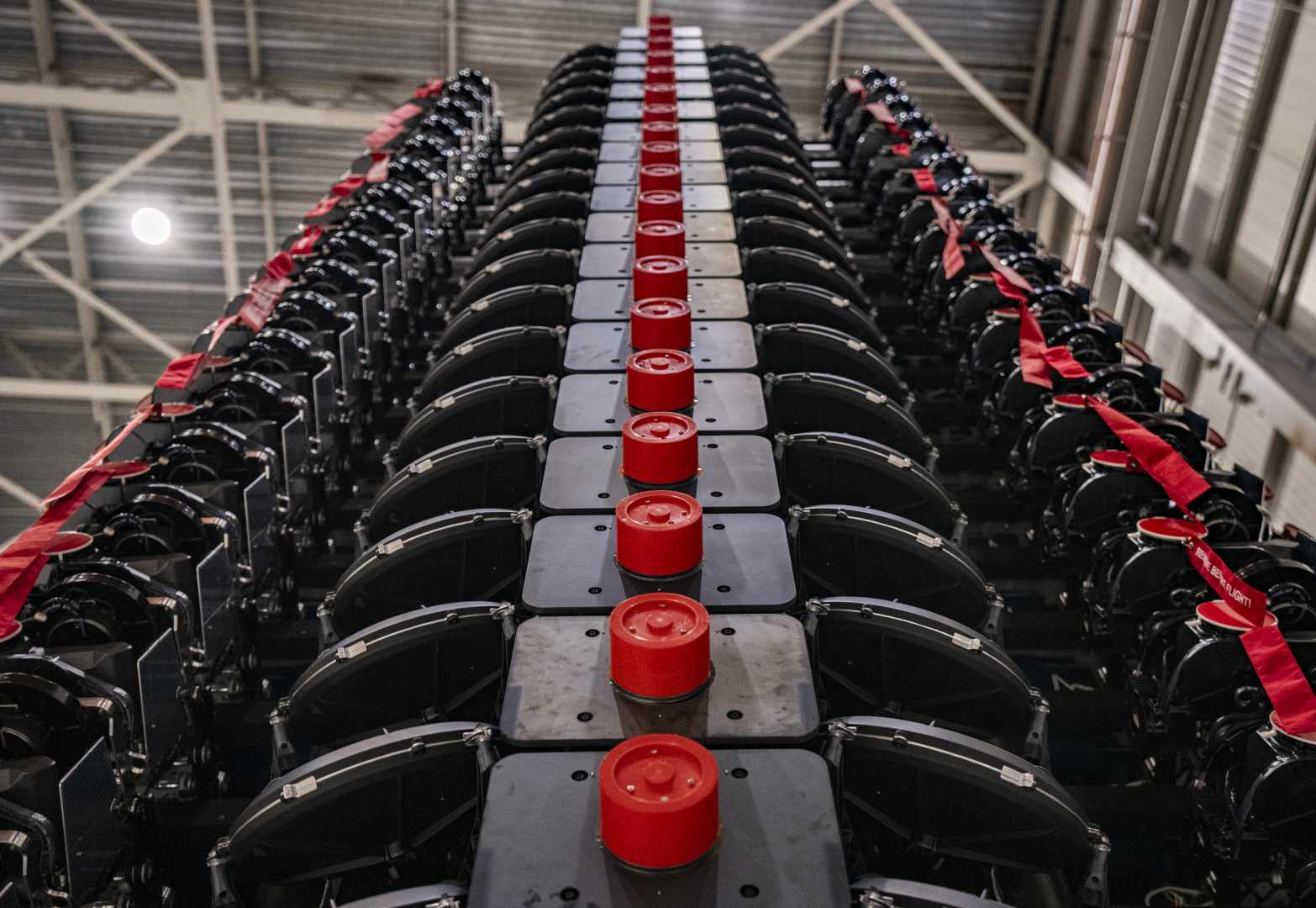
And in January 2024, SpaceX lofted its first six “Direct-to-Cell” Starlinks, which permit mobile network providers to offer “seamless global access to texting, calling and browsing”, whether “on land, lakes or coastal waters”, without the need to change hardware or firmware. Within six days of that first launch, SpaceX engineers sent and received their first text messages via Direct-to-Cell.




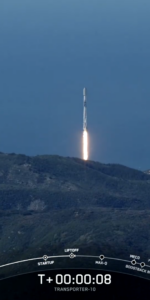
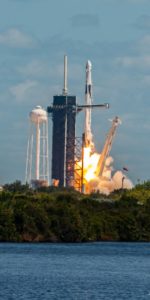
7 Comments
Leave a Reply7 Pings & Trackbacks
Pingback:SpaceX Targets Back-to-Back Falcon 9 Missions, Next Starship Launch - AmericaSpace
Pingback:SpaceX Successfully Launches, Lands Falcon 9 Double-Header Missions - SPACERFIT
Pingback:SpaceX Aims For Sixth, Seventh Launches of March, as Falcon 9, Starship Stand Ready - AmericaSpace
Pingback:SpaceX Aims For Sixth, Seventh Launches of March, as Falcon 9, Starship Stand Ready - SPACERFIT
Pingback:SpaceX Launches Tenth Vandenberg Flight of Year, Looks to CRS-30 Space Station Resupply Mission on Thursday - AmericaSpace
Pingback:SpaceX Launches Tenth Vandenberg Flight of Year, Looks to CRS-30 Space Station Resupply Mission on Thursday - SPACERFIT
Pingback:SpaceX Wraps Up 12-Mission March, Misses Breaking Records - AmericaSpace